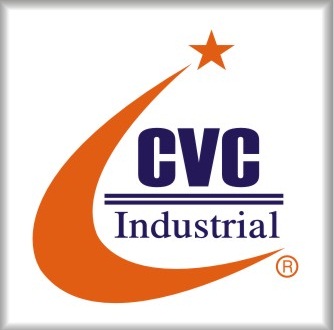What is a Coriolis Flow Meter? / Lưu lượng kế Coriolis là gì?
Coriolis flow meters measure mass flow by leveraging the Coriolis effect—a phenomenon where a moving mass in a rotating system experiences a force perpendicular to its motion.
Lưu lượng kế Coriolis đo lưu lượng khối lượng bằng cách tận dụng hiệu ứng Coriolis — một hiện tượng trong đó một khối lượng chuyển động trong hệ thống quay chịu lực tác động vuông góc với chuyển động của nó.
Working Principle / Nguyên lý hoạt động
- Coriolis Effect / Hiệu ứng Coriolis:
- Discovered by G.G. Coriolis, the effect explains the deflection of moving objects due to rotation.
- Do G.G. Coriolis phát hiện, hiệu ứng này giải thích sự lệch hướng của các vật thể chuyển động do quay.
- For a fluid in a vibrating tube, the Coriolis force is proportional to the mass flow rate.
- Đối với chất lỏng trong ống rung, lực Coriolis tỷ lệ thuận với lưu lượng khối lượng.
- Key Equations / Phương trình chính:
- The Coriolis force (FcF_c) depends on angular velocity, fluid velocity, and density:
- Lực Coriolis (FcF_c) phụ thuộc vào tốc độ góc, vận tốc chất lỏng và mật độ: Fc=2ωvDAxF_c = 2 \omega v D A x
- Mass flow rate can be derived from:
- Lưu lượng khối lượng được tính bằng: Mass Flow=Fc2ωx\text{Mass Flow} = \frac{F_c}{2 \omega x}
- Tube Vibration / Rung động ống:
- A small actuator vibrates the tube, creating detectable twisting forces proportional to the fluid’s mass.
- Bộ kích nhỏ làm rung ống, tạo ra lực xoắn phát hiện được tỷ lệ thuận với khối lượng chất lỏng.
- Dual Tube Designs / Thiết kế hai ống:
- Improved designs minimize interference, enhance accuracy, and reduce maintenance issues.
- Các thiết kế cải tiến giảm thiểu nhiễu, tăng độ chính xác và giảm các vấn đề bảo trì.
Design Features / Đặc điểm thiết kế
- Tube Shapes / Hình dạng ống:
- U-shaped or straight-tube designs.
- Thiết kế ống dạng chữ U hoặc thẳng.
- Continuous or split-tube configurations.
- Cấu hình ống liên tục hoặc ống tách đôi.
- Materials / Vật liệu:
- Common materials include stainless steel, Hastelloy®, and titanium for durability.
- Vật liệu phổ biến gồm thép không gỉ, Hastelloy® và titan để tăng độ bền.
- Transmitters / Bộ truyền tín hiệu:
- Integrated or remote.
- Tích hợp hoặc gắn từ xa.
- Provide outputs for mass flow, density, temperature, and more.
- Cung cấp đầu ra lưu lượng khối, mật độ, nhiệt độ và nhiều thông số khác.
- Self-Draining and Sanitary Designs / Thiết kế tự thoát và vệ sinh:
- Suitable for food and pharmaceutical industries.
- Phù hợp với ngành thực phẩm và dược phẩm.
Applications / Ứng dụng
- Industries: Chemical, oil and gas, food and beverage, pharmaceuticals.
- Ngành: Hóa chất, dầu khí, thực phẩm và đồ uống, dược phẩm.
- Fluids: Compatible with liquids, gases, and non-Newtonian fluids (e.g., toothpaste).
- Chất lỏng: Tương thích với chất lỏng, khí và chất lỏng phi Newton (ví dụ: kem đánh răng).
- Measures mass flow, density, and temperature in a single device.
- Đo lưu lượng khối, mật độ và nhiệt độ chỉ bằng một thiết bị.
Advantages / Ưu điểm
- Accuracy: High precision (0.1–2% inaccuracy).
- Độ chính xác: Độ chính xác cao (sai số 0,1–2%).
- Versatility: Handles a wide range of fluids and flow conditions.
- Đa năng: Xử lý nhiều loại chất lỏng và điều kiện dòng chảy.
- Additional Data: Provides density, temperature, and viscosity measurements.
- Dữ liệu bổ sung: Cung cấp các thông số mật độ, nhiệt độ và độ nhớt.
Limitations / Hạn chế
- Cost / Chi phí:
- Higher initial investment compared to volumetric flow meters.
- Chi phí đầu tư ban đầu cao hơn so với lưu lượng kế thể tích.
- Pressure Drop / Sụt áp:
- Higher than traditional flow meters due to tube design.
- Cao hơn so với lưu lượng kế truyền thống do thiết kế ống.
- Gas Pockets / Bọt khí:
- Presence of air/gas can introduce errors in measurement.
- Sự hiện diện của không khí/khí có thể gây lỗi trong đo lường.
- Process Sensitivities / Độ nhạy quy trình:
- Requires proper installation and alignment to avoid inaccuracies.
- Cần lắp đặt và căn chỉnh đúng cách để tránh sai số.
Best Practices / Thực hành tốt nhất
- Use thick-walled tubes for durability.
- Sử dụng ống thành dày để tăng độ bền.
- Install with vibration isolation to reduce interference.
- Lắp đặt với cách ly rung động để giảm nhiễu.
- Select the appropriate size to balance cost, accuracy, and durability.
- Chọn kích thước phù hợp để cân bằng chi phí, độ chính xác và độ bền.
